Rubbing Coarse Salt on Skin – Does It Make the Skin Tougher?
When first faced with the question of how to toughen the skin, most people – myself included – ask, “Why on Earth would you want to do that?”
Subsequently, as happened to me, folks are shocked to learn that skin becomes thinner with age or with circumstances such as the regular use of particular medications.
Honestly, I had no idea that skin thins, and that because it gets thinner, it becomes prone to tearing and bruising more easily.
Somehow, ancient wise guys figured out that over time, applying various unguents or other sundry materials to their skin toughened it, making their skin better able to withstand the vicissitudes and ravages of aging.
Some of these people I have labeled ‘wise guys’ had less salubrious intentions in mind and toughened their skin to serve as protection during mortal combat on the battlefield or during combat training.
A holdover of this approach persists to this day, with many dedicated modern-day martial artists using exfoliants to deliberately toughen their skin.
Table of Contents
Rubbing Coarse Salt on Skin – Does It Make the Skin Tougher?
Regularly rubbing coarse salt on the skin toughens the skin. The crystals in coarse salt are large enough and robust enough to act as a powerful exfoliant, resulting in leathery skin and, when compared to untreated skin, much more resistant to cutting and bruising.
Exfoliate – A Useful Definition When Discussing Rubbing Salt to Toughen the Skin
Exfoliation is any technique for skincare that removes dead skin cells off the upper layers of skin.
The idea behind taking this layer of debris off your skin is for exfoliation to improve your complexion and allow healthy substances and skincare products to penetrate deeper into the skin for better efficiency and best results.
Two Kinds of Exfoliants
Broadly speaking, there are two kinds of exfoliants: chemical and mechanical.
Chemical exfoliants are acids such as glycolic acid (used in facial peel pads) or salicylic acid (used in face washes).
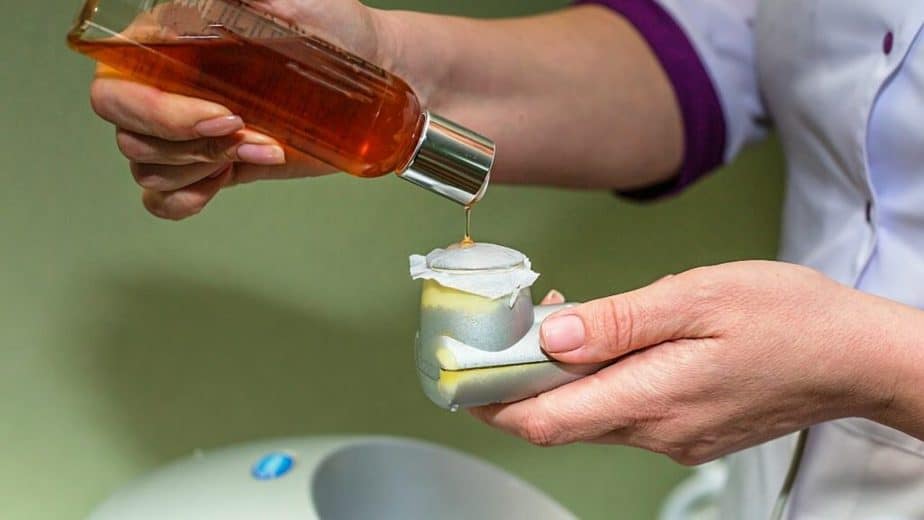
Chemical exfoliants act by melting dead skin cells. When applied, users must allow time for the acids to dissolve the dead skin, then slough them away by washing with clean water.
Mechanical exfoliants remove dead skin cells physically by a scrubbing or rubbing action.
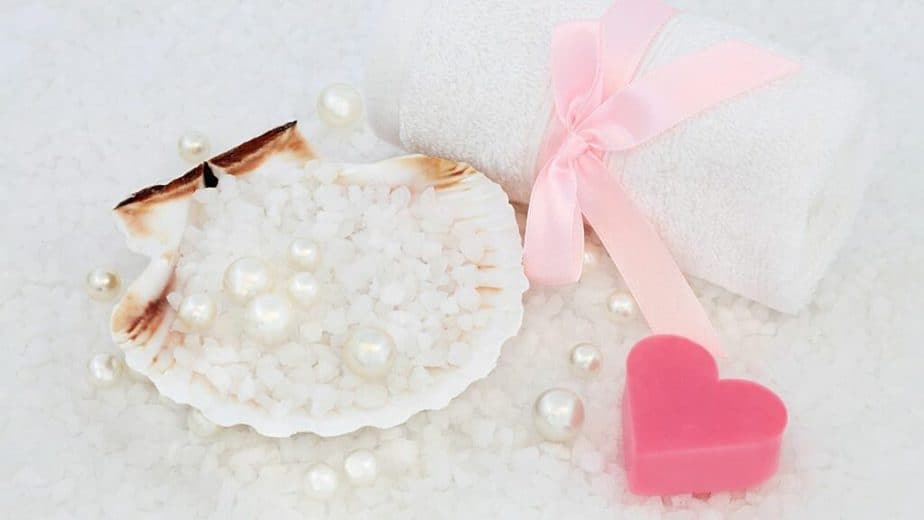
Products like beauty care skin exfoliating brushes and washcloths are examples of mechanical exfoliants, as are, surprise, surprise, crystals!
Using Crystals as Mechanical Exfoliates
Crystals are highly, regularly, and rigidly ordered solids at the molecular level. (The molecular level is the level at which we consider the arrangement of atoms in substances with at least two atoms – but probably more – joined together as one unit, called a molecule.)
Crystals form a lattice structure, which is important when considering exfoliation because these crystalline lattices are quite sharp at their edges.
One common crystalline structure with which you are undoubtedly familiar is glass, and I’m sure I don’t need to remind you how sharp glass can be!
If you don’t have a science background, you might be surprised to learn that you are very familiar with at least two more substances with crystalline structures: sugar and salt.
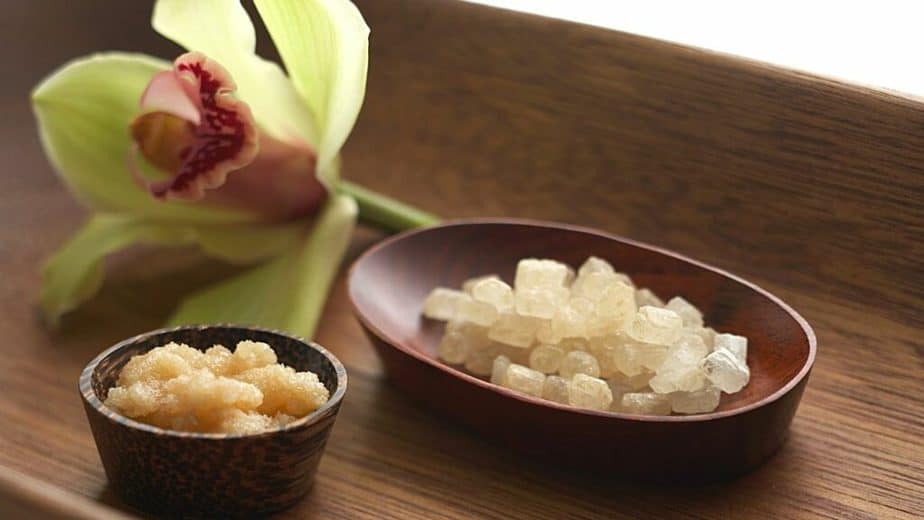
So, now we know that crystals are sharp at the molecular level, we know that salt is a crystal, and we know I’ve hinted we can use crystals as exfoliants.
The question then is which crystals and how to use them?
Salt as an Exfoliant and Skin Toughener
Crystalline substances work as exfoliants by cutting into and cutting up the layer of dead skin. The harder a person scrubs with the substance, the deeper the cuts will go.
Therefore, as with most mechanical exfoliants, it’s crucial to avoid applying too much pressure.
Of course, it is vital to choose the right kind of crystal.
For example, glass is, obviously, way too sharp a crystal to be used either on or inside the body. Sugar, it turns out, is relatively mild, and salt is somewhere in between the two.
As a somewhat sharper crystal than, say, sugar, salt produces more cuts in the skin. As time goes on, this cutting leads to microscopic scarring, which leads to a toughening of the skin.
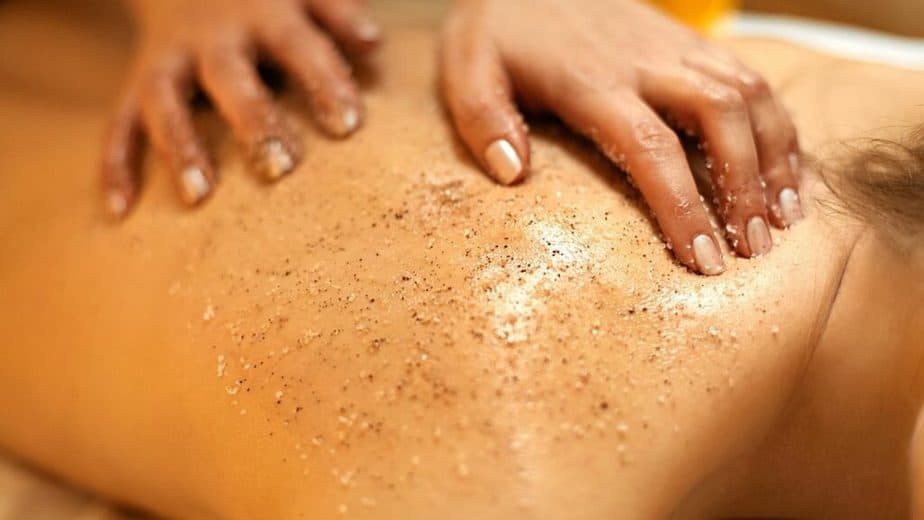
In short, the long-term use of salt on the skin as an exfoliant is to toughen the skin.
The Coarser the Salt, the Harsher it is on the Skin
Salt is naturally coarse. To make it fine, manufacturers have to grind down natural salt.
In so doing, they break down the salt crystals into smaller pieces. As an exfoliant, these smaller pieces cannot cut as deep into the skin as coarse salt and so work less efficiently, if at all.
To really get the benefits, such as they are, from salt as a skin toughener, it is necessary to set the sight on coarse salts.
The best sources of coarse salt are unprocessed natural sea salt, rock salt, or Himalayan salt.
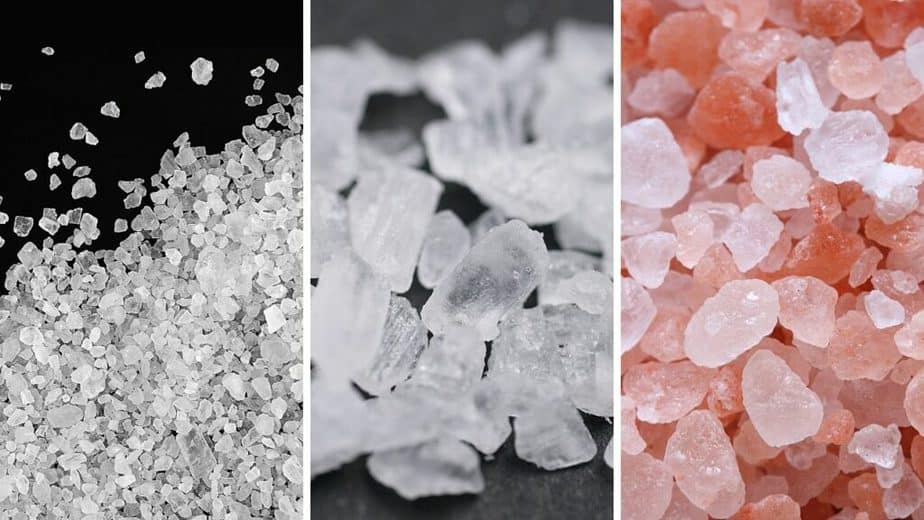
Salt can be as Harmful When Toughening the Skin as it can be Beneficial
Here’s a quick experiment for you. Pour a small quantity of salt onto the palm of one hand and ball the hand into a fist.
Wait for five minutes – no longer – then look at your palm. You will notice that the salt has left your palm red and feeling rough.
This short experiment demonstrates the powerful and corrosive nature of salt. When applied without due moderation and consideration, you can expect to experience some of salt’s harmful effects.
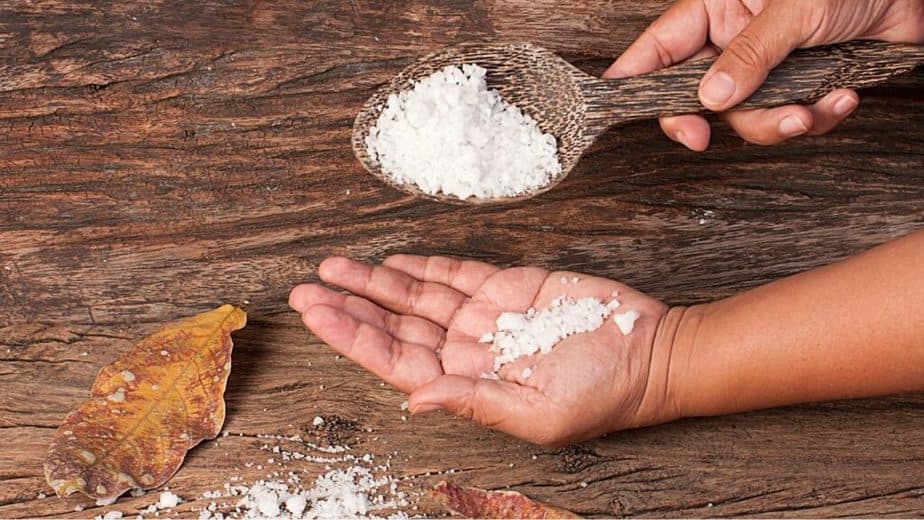
Another example of how salt can be detrimental is that it is extremely painful if it gets into your eyes or into open wounds.
Some people think that the sting of salt on an open wound shows that it is “working” as an astringent to clean the wound and disinfect it.
Actually, salt is causing further injury to the wound, and in our modern age, we should all move past that incorrect and harmful misconception.
When using salt to toughen the skin, attend to any stings felt by washing the area with clean water and applying a good modern disinfectant.
Discontinue the salt treatment until fully healed and there is no more stinging.
Frequently Asked Questions about Rubbing Coarse Salt on Skin Making Skin Tougher
Should I follow my friend’s recommendation and mix salt and soap?
The idea of mixing coarse salt and soap is that soap prevents some of the worst effects of coarse salt on the skin. However, salt crystals easily attack and destroy the globular fats in soap, so the soap can’t get pull out the dirt in the pores. In short, don’t follow your friend’s well-meant advice.
How often should I use salt to coarsen my skin?
Although I am not in favor of using salt to coarsen the skin if, for some reason, you are determined to use it, do so twice a week.
Afterword: Rubbing Coarse Salt on Skin – Does it Make the Skin Tougher?
In many ways, tougher skin is a good thing. For example, tougher skin forms better protection against cuts and bruises.
However, there are some downsides to having tougher skin: such skin can look older and weatherbeaten, transforming the skin from glowing and healthy-looking to aged and leathery.
Coarse salt does a great job of exfoliating skin, and anecdotally does an excellent job of coarsening it too, but the payback is coarse-looking skin, which most people would prefer to avoid.

